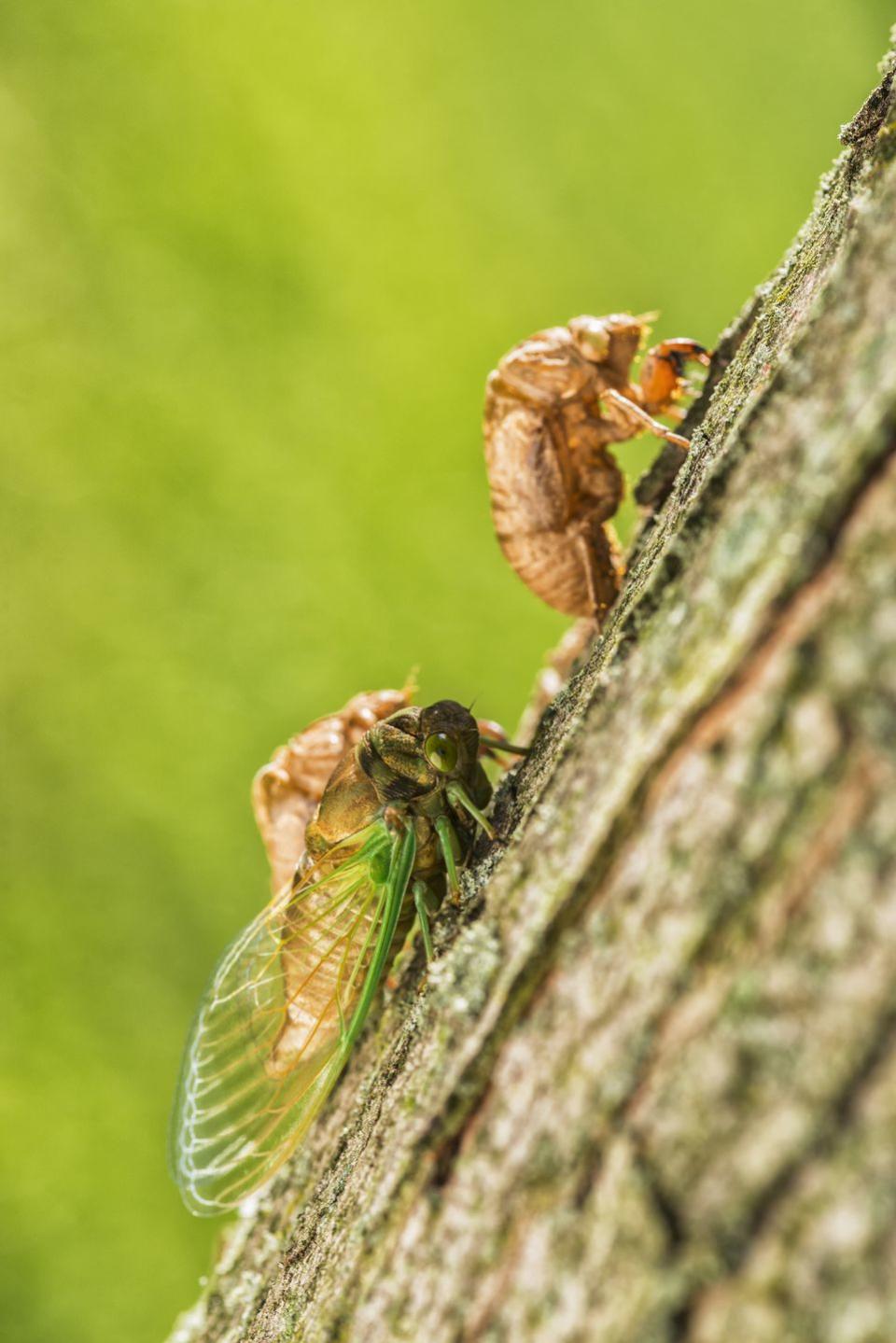Why Do Cicadas Molt? Experts Say You’ll See Gross Skins Everywhere This Summer

Sightings of Brood X cicadas are popping up all over the eastern U.S. Reports of the bulbous-eyed bugs—including plenty of photos and videos—are starting to spill into social media.
These insects are emerging from the ground after 17 years to make tons of noise, mate, eat, lay eggs, and molt. So, not only will you spot the cicadas hanging out just about everywhere, you’ll probably also see some of their dead skin (a.k.a. exoskeletons).
Brood X cicadas aren’t the only ones that molt; annual cicadas, which emerge each year, also shed their skin. But given that Brood X is a massive group of bugs, it’s pretty likely you’ll stumble across a molt (or three... or 10) from their crew over the next few weeks.
But why do cicadas shed this shell in the first place? Ahead, entomologists explain the fascinating phenomenon.
What are cicada molts, exactly?
Molts are the old exoskeletons of insects, including cicadas. An exoskeleton, in case you’re not familiar with the term, is a hard outer covering that helps support and protect the bug.
“Molts are the insect ‘skin’ that cicadas shed or leave behind when they become adults,” says Nancy Troyano, Ph.D., a board-certified entomologist and director of operations education and training for Ehrlich Pest Control.
Why do cicadas molt?

Cicadas emerge from underground as nymphs, which is a juvenile stage in their life cycle, Troyano explains. “Beneath their skin, they are growing their wings and their adult body,” she says. “Insects do not stretch to enlarge, they actually grow a new exoskeleton beneath their current one.”
During the molting process, the cicadas are “moving from one phase of life to the next,” says Frank Meek, technical services manager at Rollins pest control.
This is actually vital to the cicada’s development. “Because the exoskeleton is hard, it prevents insects from growing so they must molt the ‘skin’ to continue to develop,” says Angela Tucker, Ph.D., board-certified entomologist and technical manager for Terminix.
When the time comes to officially transition into adults, the cicadas will molt and shed their nymph skin. Then, their new adult body and wings will be exposed. “The wings will inflate with fluid and expand, and their new skin will harden—which typically takes several days,” Troyano says.
How long does it take for cicadas to molt?
The process is actually slow by bug standards. “It takes cicadas a long time to molt compared to others,” Meek says, noting that the process can be one to two hours, depending on humidity.
“Once cicadas emerge from the soil, they will immediately find a suitable place in which to molt to transform into adults,” Troyano says. From there, the newly molted cicadas will usually hide out in trees or other vegetation for several days while their new exoskeletons completely harden, she says.
Why? Because their new exoskeleton hasn’t hardened yet; they’re “a juicy little morsel” for predators until that point,” Meek says. “They’re very vulnerable during that time.”
What should you do if you see a lot of cicada exoskeletons?
You’ll probably see lots of these skins this summer. “This year, because of Brood X, you may see more of them because a large group is emerging, molting into adults, and finding a partner,” Tucker says.
So, if you see molts around, “you can bet there is an adult cicada nearby,” Troyano says. From there, the cicadas will be active for about four to six weeks before they die off.
Don’t panic if you happen to notice a fair amount of molts near you. “Cicadas do not cause harm to humans and pose little threat to mature vegetation, so there is no need to treat cicadas with pesticides,” Troyano says.
But if you’re freaked out by seeing a lot of cicadas (fair), Troyano says you can spray them off trees with a garden hose or put something like mesh or cheesecloth around the trunk to keep the bugs from crawling up.
Still, Meek says that there’s no need to do any kind of pest control. “Just let them do their thing,” he says. “Enjoy the wonder of nature.”
Go here to join Prevention Premium (our best value, all-access plan), subscribe to the magazine, or get digital-only access.
You Might Also Like

